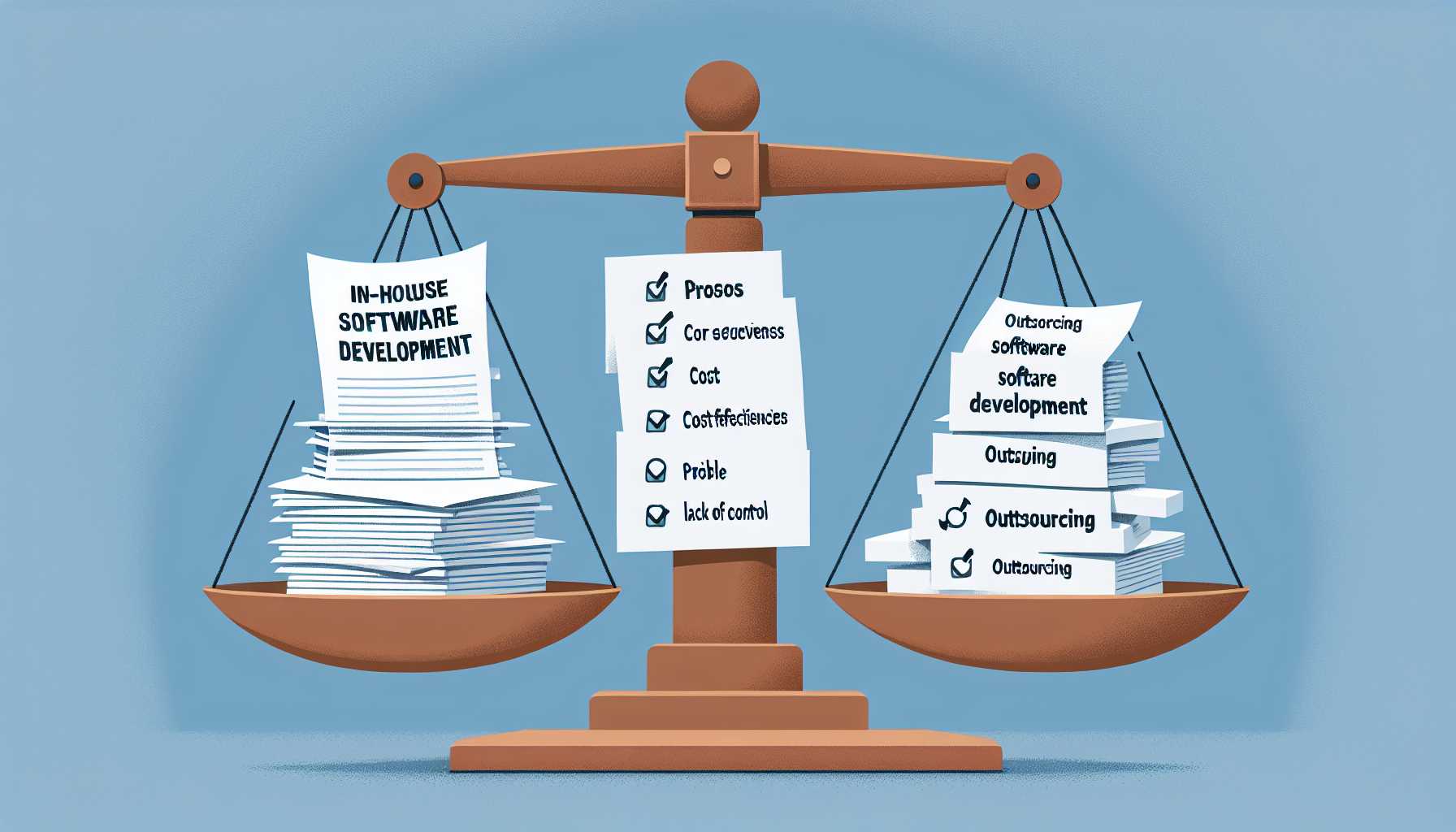Hello, product champions!
Balancing in-house and outsourced software development is akin to walking a tightrope—it requires precision, balance, and a clear head. Drawing from my reservoir of experiences, I aim to help you find that equilibrium and make decisions that align with your organization’s goals and capabilities.
Assessing the Playing Field
Before you decide on in-house development or outsourcing, it’s critical to assess your company’s strengths, weaknesses, and strategic objectives. In one of my past roles, we used the SWOT framework (Strengths, Weaknesses, Opportunities, Threats) to analyze our situation. Our strengths lay in domain expertise, but we lacked the speed to scale. This insight led us to outsource parts of our development while keeping core IP development in-house.
Evaluating In-House Capabilities
In-house development gives you control and alignment with your organization’s culture. However, it’s vital to be realistic about your capabilities. Can your team deliver? Do they have the time, skills, and resources? Once, due to overestimating our capabilities, we experienced a significant delay in a project, emphasizing the importance of objective self-assessment.
Considering Outsourcing
Outsourcing can plug gaps in your capabilities, bring in fresh perspectives, and improve scalability. It can, however, come with trade-offs such as reduced control and potential quality issues. I recall a time when we outsourced a project offshore to reduce costs but faced severe communication barriers that impacted the project timeline adversely. It taught us to weigh cultural and language factors alongside economic ones.
Developing a Blended Approach
In my experience, the most effective approach has often been hybrid—combining the strengths of in-house development with the flexibility of outsourcing.
Defining Core vs. Non-Core Activities
Identify which activities are core to your business and which are not. Keep core activities, especially those linked to your unique selling proposition or containing sensitive IP, in-house. In one of my past positions, we outsourced our customer portal’s frontend development while keeping the backend, which processed sensitive data, in-house.
Crafting Clear Contracts and SLAs
When you do outsource, clear contracts and Service Level Agreements (SLAs) are pivotal. Ensure that expectations regarding deliverables, timelines, and communication are explicitly stated. From a misadventure caused by an ambiguous contract, I learned that specificity is the antidote to misunderstanding.
Building Effective Outsourcing Partnerships
The best outsourcing relationships are those where the vendor becomes a strategic partner. In my tenure as a product leader, we cultivated a relationship with an outsourcing firm where they dedicated a team to our projects, resulting in better alignment and performance.
Selecting the Right Partner
Choosing the right outsourcing partner is crucial. Look for vendors with a track record in your industry or technology stack. I once chose a vendor based on their exceptional portfolio in an unrelated domain, only to find they couldn’t meet our specific needs—teaching me to prioritize domain expertise over general experience.
Establishing Communication Protocols
Set communication protocols early. Regular check-ins, real-time collaboration tools, and a shared understanding of working hours across time zones are all vital. A project I managed suffered when we didn’t align our working hours with an outsourced team operating half a world away, leading to significant delays in addressing critical issues.
Mitigating Outsourcing Risks
Outsourcing introduces risks that need to be anticipated and mitigated. Intellectual property protection, quality control, and vendor dependency are some of the challenges that must be addressed.
Intellectual Property Protection
Ensure your contracts clearly define the ownership of any development work. IP protection was a lesson I learned the hard way when an outsourced developer tried to claim ownership of a key software module they developed for us. Thankfully, our clear contract terms prevented a legal tussle.
Maintaining Quality Standards
Quality can never be compromised. Implement rigorous QA processes, both in-house and at the vendor’s end. A quality lapse from an outsourced component once resulted in a costly product recall for us, highlighting the need for stringent quality checks regardless of where the work is done.
Measuring Success and Being Agile
Establish metrics to monitor the success of both in-house and outsourced efforts. Be prepared to pivot your strategy if it’s not meeting your product goals. I once shifted a major feature development in-house mid-project due to underwhelming performance from an outsourcing partner, ultimately making the release a success.
In balancing in-house and outsourced development, there is no one-size-fits-all solution. The optimal approach depends on your strategic goals, capabilities, and the unique challenges of each project. By carefully assessing your capabilities, crafting a strategy that leverages the benefits of both worlds, and maintaining rigorous controls, you can successfully manage this balance for your organization.
Until we meet again, lead your products with wisdom and enthusiasm!

